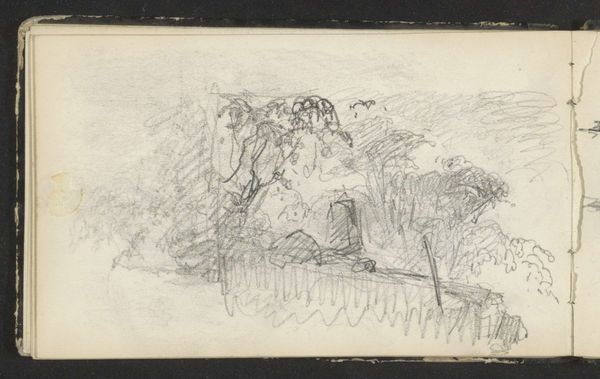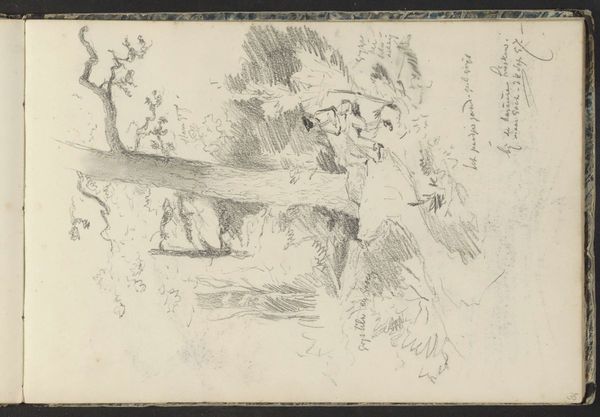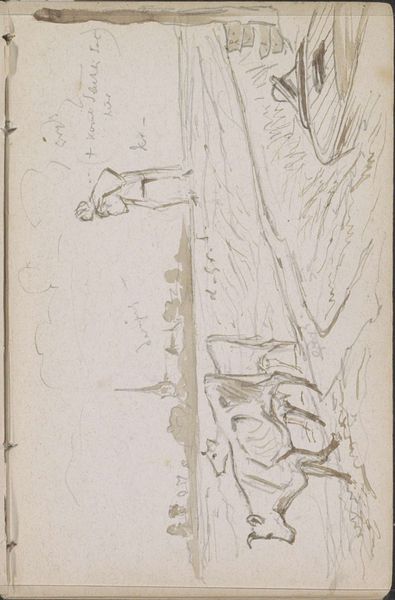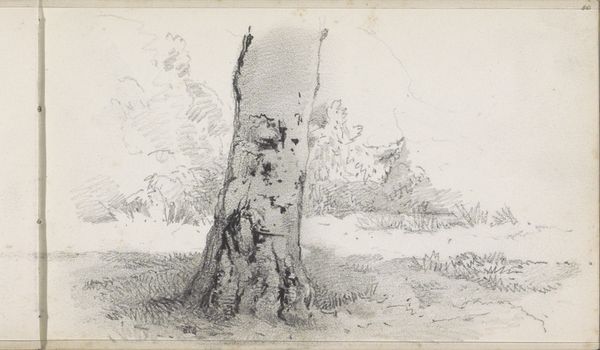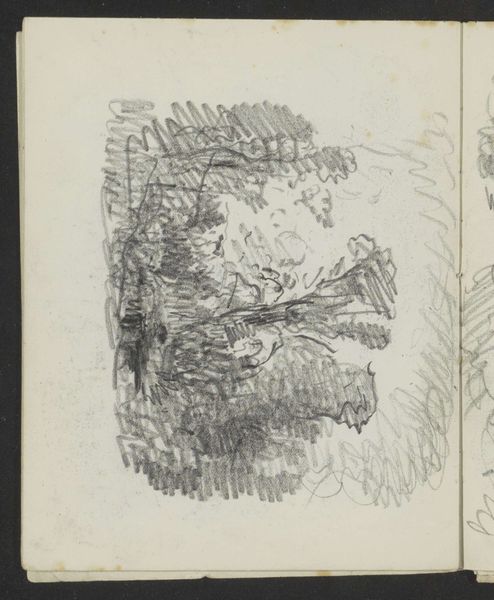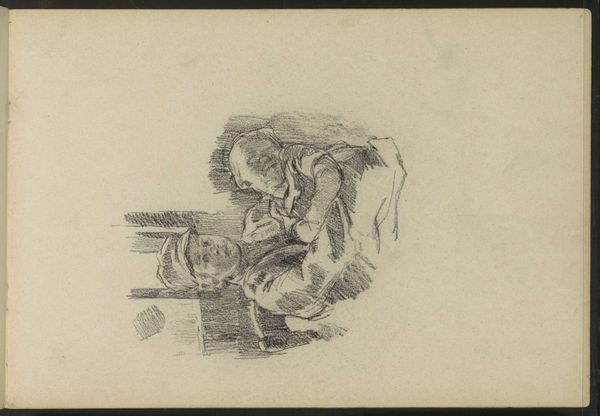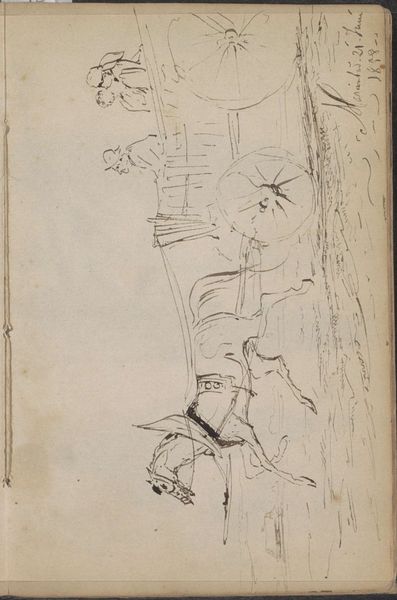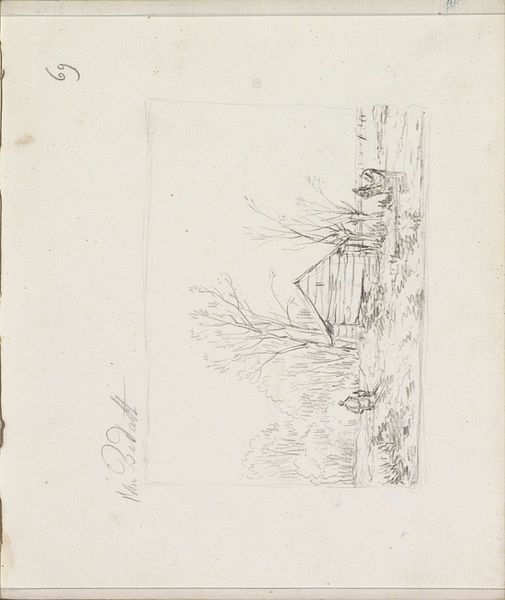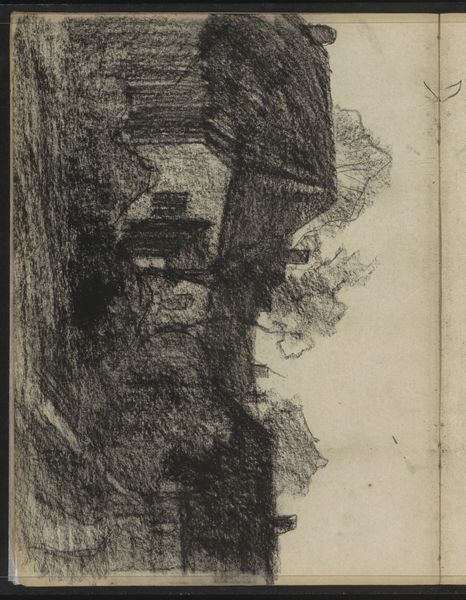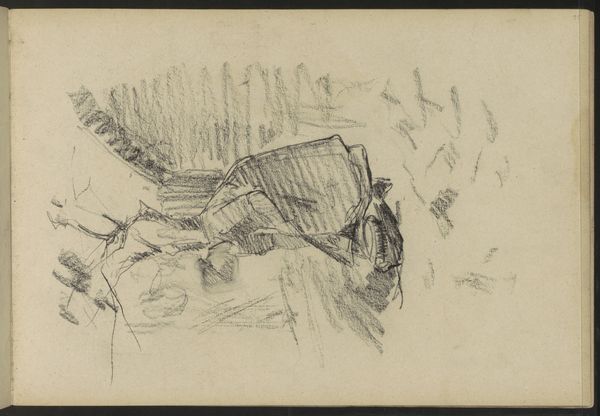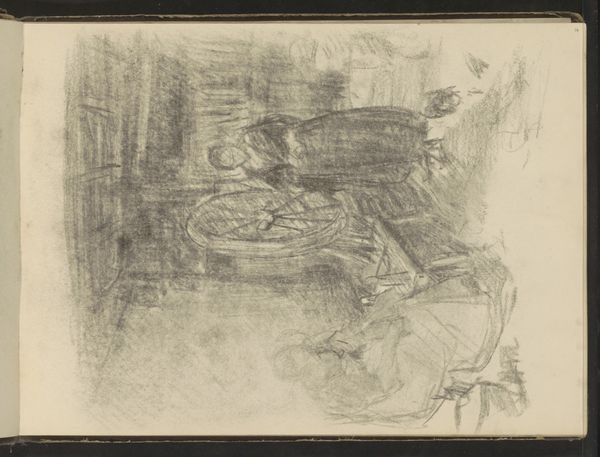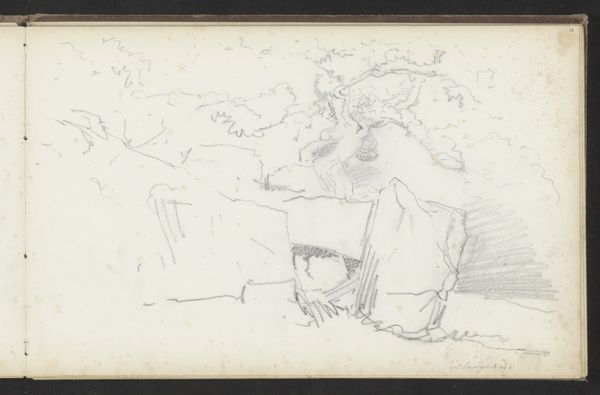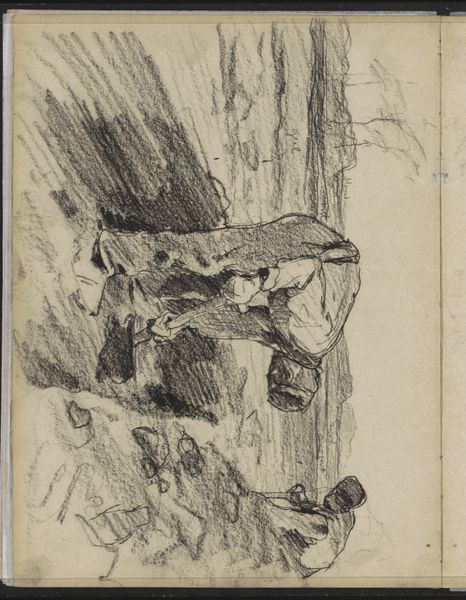
Copyright: Rijks Museum: Open Domain
Editor: Here we have Jan Baptist Tetar van Elven's "Heilige Hieronymus," a pen and ink drawing on paper, made sometime between 1843 and 1864. The sketchy, almost frenetic lines create a very intimate feeling, like we’re glimpsing a private moment. What do you see in this piece? Curator: I see a deep engagement with the material conditions of artistic production. Consider the humble materials: paper, pen, ink. These are readily available, cheap. Yet, through skillful labor, they’re transformed into an image evoking complex narratives. Note also how the "intimacy" you perceived could also stem from its being a preliminary sketch – revealing the artist's process, rather than a finished commodity. Do you think this drawing challenges any assumptions about what constitutes 'high' art? Editor: That's a great point about challenging 'high' art. I hadn’t considered how the seeming informality, because of the visible process, pushes against academic polish. It almost feels subversive, democratizing the act of creation. Curator: Precisely! The medium’s accessibility and the sketch-like quality hint at a different relationship with labor and consumption. What narratives do you think it suggests? The labor behind devotional practice mirrored in the labor of art production itself? Editor: It really reframes my understanding. The skull suddenly feels less like a symbol of mortality and more like another material object within his workspace, considered together with books, pen, paper, and of course his intellectual labor as a form of making. It really equalizes everything! Curator: Exactly! By focusing on the materials and production, we gain insight not just into artistic skill but into the broader social and economic context shaping artistic creation and consumption. It disrupts traditional art historical narratives by emphasizing making over pure aesthetics or biography. Editor: I see now how understanding materials helps reveal social and economic forces within art production. Thanks! Curator: Indeed. Examining the process helps unlock richer and perhaps less obvious cultural insights.
Comments
No comments
Be the first to comment and join the conversation on the ultimate creative platform.
